Culturas y tradiciones de puerto rico: historia, caracteristicas, patrimonio, y más
historia, caracteristicas, patrimonio, y más
La cultura de Puerto Rico concentra en su folclore y costumbres rasgos indígenas de los taínos y de otras externas como las africanas y europeas, específicamente, las españolas. En el proceso de integración de las mismas ha resultado lo que hoy se conoce como la identidad cultural de Puerto Rico.
cultura de Puerto Rico
Indice De Contenido
- 1 Historia y cultura de Puerto Rico
- 2 Características culturales de Puerto Rico
- 3 Patrimonio cultural de Puerto Rico
- 3.1 Castillo de San Cristóbal
- 3.2 Castillo San Felipe
- 3.3 Fortín de San Juan de la Cruz
- 3.4 Palacio de Santa Catalina
- 3.5 El viejo San Juan
- 3.6 Casa del libro
- 4 Patrimonio natural de Puerto Rico
- 5 Baile cultural de Puerto Rico
- 5.1 La bomba
- 5.2 La danza
- 5.3 La plena
- 6 Festivales de Puerto Rico
Historia y cultura de Puerto Rico
Puerto Rico fue descubierta por Cristóbal Colón en 1493 y llamó a este territorio paradisíaco como San Juan Bautista. Este importante acontecimiento ocurrió en el segundo viaje de Colón, el cual fue trazado con un único objetivo colonizar las tierras exitosamente. En comparación con el primer viaje, el nuevo arribo de los colonizadores tenía un mejor horizonte, ya que no sólo se trataba de un viaje de exploración sino que de conquistar. La conquista se llevaría acabo con cabalidad a través del conocimiento de la lengua de los Taínos y la evangelización.
Este importante acontecimiento ocurrió en el segundo viaje de Colón, el cual fue trazado con un único objetivo colonizar las tierras exitosamente. En comparación con el primer viaje, el nuevo arribo de los colonizadores tenía un mejor horizonte, ya que no sólo se trataba de un viaje de exploración sino que de conquistar. La conquista se llevaría acabo con cabalidad a través del conocimiento de la lengua de los Taínos y la evangelización.
Colón logró juntar una gran flota de navíos y carabelas, con ella una extensa tripulación de al menos unos 1500 hombres dedicados a diversos oficios. Principalmente los primeros colonizadores que llegaron a San Juan Bautista fueron: representaciones del clérigo autorizados por el papa; monjes como, cronistas como Bartolomé de las Casas, etnógrafos y exploradores deslumbrados por la riquezas que se encontraban en las tierras de América.
Historia de la cultura de Puerto Rico y Cristobal Colón
Este hecho sería el que iniciara la historia y la cultura de Puerto Rico con la colonización y el encuentro de los mundos, tal como suelen reseñar los libros. Lo que hoy se conoce como cultura de Puerto Rico es cada una de las costumbres, bailes, fiestas, platos típicos, fechas patrias, patrimonio materiales (edificaciones, teatros, museos históricos) que crean la gran diversidad cultural de Puerto Rico y con ello, la identidad de la nación.
Lo que hoy se conoce como cultura de Puerto Rico es cada una de las costumbres, bailes, fiestas, platos típicos, fechas patrias, patrimonio materiales (edificaciones, teatros, museos históricos) que crean la gran diversidad cultural de Puerto Rico y con ello, la identidad de la nación.
Continuando con la historia, Puerto Rico era anteriormente el nombre de la capital, tiempo se invirtieron los papeles y se decidió llamar la isla de esa manera, mientras la capital sería conocida como San Juan Bautista. Este territorio tropical y único se convirtió en objeto de ambición para un colonizador en particular, Juan Ponce de León. El cargo que poseía dentro de la empresa colonizadora, Ponce hizo de Puerto Rico la base militar española más importante de la época de la conquista.
Esta maniobra conduciría a la construcción de espacios militares en la isla. Rápidamente se crearon murallas de defensa militar alrededor de las ciudades. Aún se conservan trozos de estas estructuras y son consideradas como patrimonio cultural de Puerto Rico. Igualmente, se edificó el castillo del Morro, esta era una estructura con gran resistencia a ataques exteriores, pues las paredes son de unos 6 metros de espesor. Otras de los enclaves militares más importantes en Puerto Rico son los fuertes utilizados para albergar militares de guerra: San Gerónimo y San Cristóbal.
Igualmente, se edificó el castillo del Morro, esta era una estructura con gran resistencia a ataques exteriores, pues las paredes son de unos 6 metros de espesor. Otras de los enclaves militares más importantes en Puerto Rico son los fuertes utilizados para albergar militares de guerra: San Gerónimo y San Cristóbal.
Asi mismo se fue constituyendo la historia de lo que sería hoy Puerto Rico, con la imposición de las costumbres de España a través de la colonización, luego este mestizaje cultural se fue ampliando mucho más con la llegada de la mano de obra de los africanos. La falta de mujeres para estos hombres hizo que se fueran mezclando con las mujeres locales. Ya no sólo se habla únicamente de fusiones del folklore, sino de las razas. Los taínos no eran totalmente puros, así como tampoco lo era su concepción del mundo. Sin duda, hubo una renovación de la cultura indígena de Puerto Rico, de los taínos resultaron los primeros criollos de la isla.
segundo viaje encuentro fundacional para la cultura de Puerto Rico
La mezcla de razas se consideró una problemática en el época colonial, pues cada vez que se fusionaban distintas etnias, se incluían nuevos elementos a la cultura puertorriqueña.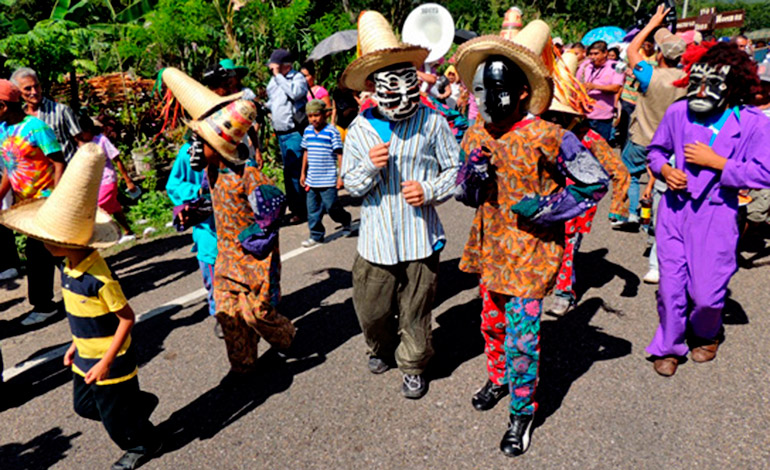 Una vez que se produjo el tráfico de negros en América, se fueron aligerando el tabú social de la raza, pues la presencia de los africanos produjo que Puerto Rico fuera aceptando la mixtura social y dejara a un lado la xenofobia.
Una vez que se produjo el tráfico de negros en América, se fueron aligerando el tabú social de la raza, pues la presencia de los africanos produjo que Puerto Rico fuera aceptando la mixtura social y dejara a un lado la xenofobia.
Indudablemente, la cultura no puede ser entendida si se separación de la sociedad, mucho menos si se evada problemáticas que inciden en la identidad. Por eso, es importante tener en cuenta cuáles fueron los movimientos y nexos migratorios que tuvo un determinado lugar para saber las características culturales de una localidad. Puerto Rico fue epicentro de la fusión racial, así como sucedió con islas y territorios hermanos. La cultura de cada uno de los países de América se vio influenciado con el proceso de colonización. Pues hubo lugares en los cuales las culturas aborígenes se integraron, en otros simplemente se erradicaron, su desaparición fue tan inminente que sólo se tienen ligero atisbo de su existencia.
Si bien, lo españoles y los africanos tuvieron influencia para la constitución de lo que sería la nueva visión del mundo, en 1898 las cosas cambiarían, pues los Estadounidense decidieron invadir la isla. La libertad de los puertorriqueños no duraría mucho, para aquél momento el país por primera vez celebraba un momento histórico, ya que realizaron el primer proceso electoral en la isla.
La libertad de los puertorriqueños no duraría mucho, para aquél momento el país por primera vez celebraba un momento histórico, ya que realizaron el primer proceso electoral en la isla.
La sed de la autonomía fue resquebrajada, Puerto Rico, en poco tiempo, pasó a manos de los americanos.
cultura de Puerto Rico en El viejo San Juan
La historia geopolítica de Puerto Rico es tratada como un pequeña concesión. Una vez que Estados Unidos se interesa por el territorio, hubo en Francia un movimiento que le concedió la isla a los nuevos invasores. Esta estrategia política entre Francia y EEUU le daría a fin a la guerra que estaba en marcha para el año 1898.
En el siglo XX, aún se sigue hablando en los foros internacionales de la posible independencia de Puerto Rico. Mientras eso pasaba, a principios del siglo, en 1917, se le concede a los puertorriqueños la ciudadanía norteamericana.
Más adelante, en 1951, la isla de Puerto Rico tendría un nuevo estatus en relación con Estados Unidos, se convirtió en una nación de ejercicio libre a pesar de ser parte de EEUU.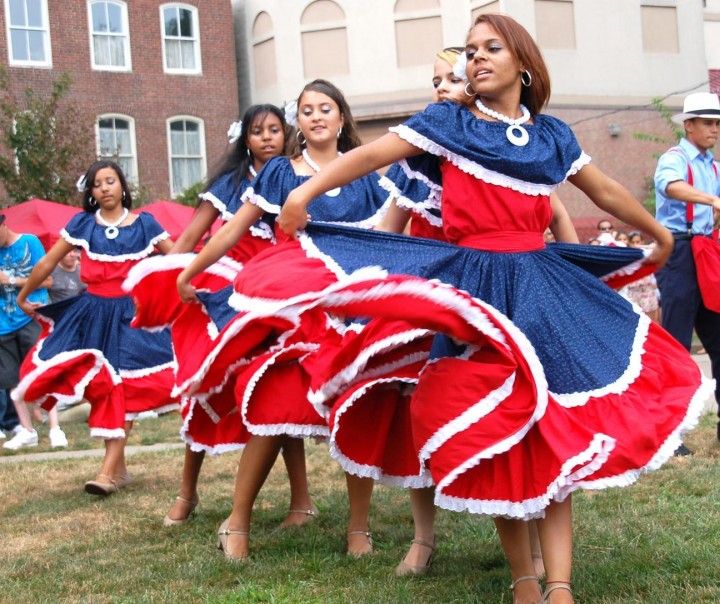
La historia nos ha demostrado que las intervenciones externas han sido de provecho paras las culturas autóctonas de una región, a pesar de las consecuencias que estos procesos produjeron en los pueblos aborígenes. Hoy por hoy se puede hablar de la diversidad cultural de Puerto Rico y pasa saber más sobre este tema te invitamos a ver el siguiente vídeo de la historia de esta isla del caribe.
La historia de Puerto Rico es indispensable para entender las manifestaciones culturales del país. Sin ella es imposible saber a, ciencia cierta, cómo surgen las tradiciones y el folclore. Teniendo en cuenta el papel protagónico que tuvo el navegante y conquistador Cristóbal Colón en la mixtura cultural, he aquí una recopilación que condesa lo que se entiende como cultura de Puerto Rico.
Características culturales de Puerto Rico
caracteristicas de la cultura de Puerto Rico
Puerto Rico es una tierra rica de folclore, de creencias y costumbre de origen popular, muchas de ellas provenientes de la cultura taina. No obstante, este pequeño país tropical, no sólo está enmarcado con las influencias indígenas, pues su cultura tiene presencia de rasgos o mejor dicho, herencias africanas que fueron adquiridas durante la época de la colonia. Teniendo en cuenta la diversidad cultural que encierra esta isla caribeña conquistada por los españoles siglos atrás, veremos algunos de los aportes culturales de Puerto Rico para el mundo.
No obstante, este pequeño país tropical, no sólo está enmarcado con las influencias indígenas, pues su cultura tiene presencia de rasgos o mejor dicho, herencias africanas que fueron adquiridas durante la época de la colonia. Teniendo en cuenta la diversidad cultural que encierra esta isla caribeña conquistada por los españoles siglos atrás, veremos algunos de los aportes culturales de Puerto Rico para el mundo.
Las culturas caribeñas se caracterizan por el ritmo. ¿Cuántas veces no se ha leído o escuchado que los latinos tienen el ritmo corriendo por las venas?. Los puertorriqueños son ejemplo vivo, el baile es parte del folclore puertorriqueño, tanto por sus movimiento, por la música como por las vestimentas utilizadas para realizar las danzas tradicionales (Ver artículo: traje típico de Puerto Rico). La música es ejemplo de lo que significa la cultura de Puerto Rico: fusión de culturas, ya que en ella se amalgama sonidos africanos y europeos.
No obstante, la música y el baile no son aspectos característicos de la cultura boricua, también en otras regiones del mundo:la música folclórica dominicana, la música boliviana, la música cubana entre otras.
Los carnavales de Puerto Rico son muy populares en esta región caribeña y en otras como el carnaval en Venezuela y el carnaval de Oruro. En el marco de esta festividad tradicional, las personas se disfrazan de personajes pictóricos. Muchos de los personajes se han convertido en emblemas folclóricos. Cabe destacar que en las fiestas nacionales o populares, los escenarios son llenos de colores claros y llamativos.
De manera que la cultura de Puerto Rico se caracteriza por ser rimbombante, llena de exotismo, alegría y el carisma típico de los caribeños.
Patrimonio cultural de Puerto Rico
patrimonio cultural de Puerto Rico
Todos los países son poseedores de tesoros invaluables, ya sean culturales, inmateriales, materiales o naturales. Ejemplo de ello es la isla de Puerto Rico, un rincón cultural que se encuentra en el centro del mar.
La cultura popular de Puerto Rico se ha manifestado en sus creaciones artísticas. Es así como el folclore ha condensado la identidad de los nativos de esta región del mundo. De manera similar sucede en otros lugares, en el caso de esta tierra caribeña de tainos son muchos los aportes culturales que ha dejado las historias y los pueblos nativos a los hombres de hoy.
De manera similar sucede en otros lugares, en el caso de esta tierra caribeña de tainos son muchos los aportes culturales que ha dejado las historias y los pueblos nativos a los hombres de hoy.
Así como sucede en Puerto Rico que hay patrimonios culturales, hay otras zonas que existen bienes materiales y naturales que se consideran parte de la cultura propia del país. Por ejemplo: patrimonio cultural de el Salvador, patrimonio artístico de Venezuela, y el patrimonio cultural del Ecuador.
Los patrimonios culturales de Puerto Rico son el registro y el testimonio de la existencia de un pasado, de la lucha y de las creencias. Todos ellos representan los valores culturales de Puerto Rico como ejemplo de la historia de la isla. Teniendo en cuenta la importancia y el significado de las herencia de los bienes materiales, naturales y del folclore, presentamos cuáles son los patrimonios de Puerto Rico símbolos de la cultura tainos.
Castillo de San Cristóbal
Castillo de San Cristóbal patrimonio de la cultura de puerto rico
El castillo de San Cristóbal, residencia de militares españoles en la época de la colonia. Se encuentra ubicado en San Juan. La historia cuenta que esta edificación fue realizada con el propósito de salvaguardar a los habitantes de la isla de ataques terrestres y de posibles invasiones. El castillo de San Cristóbal dado a la época histórica en la que fue construido (1783), así como el significado que tiene para la cultura de Puerto Rico ha sido considerado como patrimonio de la Humanidad. Actualmente es el principal atractivo histórico de los turistas locales e internacionales.
Se encuentra ubicado en San Juan. La historia cuenta que esta edificación fue realizada con el propósito de salvaguardar a los habitantes de la isla de ataques terrestres y de posibles invasiones. El castillo de San Cristóbal dado a la época histórica en la que fue construido (1783), así como el significado que tiene para la cultura de Puerto Rico ha sido considerado como patrimonio de la Humanidad. Actualmente es el principal atractivo histórico de los turistas locales e internacionales.
En América también existen otras regiones que existen patrimonio de la humanidad, como sucede con el patrimonio de la humanidad en México, en el que se destaca el monumento histórico de Chichen Itza México.
Castillo San Felipe
cast
El castillo San Felipe de Morro a diferencia del fuerte de San Cristóbal, tuvo otra misión al momento de ser construido, pues esta castillo español buscaba proteger a la isla de los ataques que viniese del exterior por vía marítima. Su importancia histórica ha conducido que organizaciones internacionales hayan declarado a El Morro como patrimonio de la Humanidad de la Unesco. Este hecho ha llevado a la conservación de la estructura con el fin de mantener rastros arqueológicos en perfectas condiciones.
Este hecho ha llevado a la conservación de la estructura con el fin de mantener rastros arqueológicos en perfectas condiciones.
El morro se encuentra abierto al público para que ellos mismos puedan recorrer la historia de Puerto Rico por sí mismos. Los lugares históricos de un país atesoran lo que una población ha sido y recuerda a los tiempos venideros las decisiones a tomar, por eso la importancia que de tomar los sitios históricos como turismo.
Fortín de San Juan de la Cruz
El Fortín San Juan de la Cruz forma parte de los sitios históricos de Puerto Rico, tal como sucede con las dos estructuras anteriores, fue considerado por la Naciones Unidas como patrimonio de la humanidad. Este fortín fue construido como apoyo estratégico para atacar las naves invasoras. Su ubicación permitía realizar una respuesta efectiva. Esta estructura ha sido reconstruida en varias ocasiones y fue clave para evitar que los holandeses se apoderaran de la isla en 1670.
Palacio de Santa Catalina
Palacio de Santa Catalina patrimonio de la cultura de puerto rico
La fortaleza o Palacio de Santa Catalina es otras de las edificaciones emblemáticas en Puerto Rico.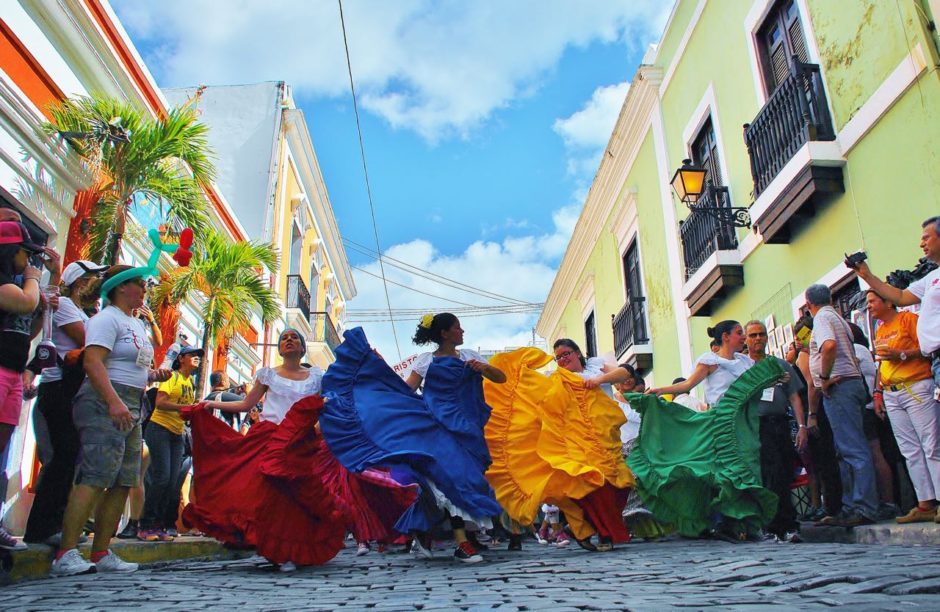 En estos momento funciona como la casa de gobernador y forma parte de la arquitectura histórica de la isla, ya que fue la primera construcción autorizada por el Rey Carlos I para que sirviese como centro de operaciones militares.
En estos momento funciona como la casa de gobernador y forma parte de la arquitectura histórica de la isla, ya que fue la primera construcción autorizada por el Rey Carlos I para que sirviese como centro de operaciones militares.
El viejo San Juan
El viejo San Juan es la zona histórica de la isla y ha sido distinguido por formar parte de el valores cultural de Puerto Rico. Este centro histórico tiene una data de 500 años de existencia, por lo que su preservación es asunto primordial. En estos momentos El viejo San Juan se encuentra en la lista de espera para ser declarado como Patrimonio de la humanidad.
calles del viejo San Juan centro de la cultura de Puerto Rico
Casa del libro
La casa del libro funciona como el reservorio más importante en latinoamérica cuando se trata de los archivos históricos de la época colonial. Ese lugar es un tesoro para los investigadores dedicados a los estudios coloniales, ya que en él se encuentra una serie de documentos escritos y firmados por los cronistas que vinieron con Cristóbal Colón en la segunda expedición hacia el nuevo mundo. Esta serie de crónicas de indias tienen gran importancia histórica y literaria para Puerto Rico. Estas son las razones que han convertido a la casa del libro en un apreciado lugar para los amantes a la cultura, historia y la literatura.
Esta serie de crónicas de indias tienen gran importancia histórica y literaria para Puerto Rico. Estas son las razones que han convertido a la casa del libro en un apreciado lugar para los amantes a la cultura, historia y la literatura.
La arquitectura no es la única expresión artística con valores culturales en Puerto Rico, también existen otras, por ejemplo el baile, los festivales, la artesanía, la literatura, leyendas sus creencias y el folclore en general. Así que en los siguientes segmentos se ahondará un poco más en estas expresiones de vida. Sin lugar a dudas en cada una se podrán apreciar la diversidad linguistica y cultural de Puerto Rico.
Una manera de entender la mixtura cultural de los puertorriqueños es saber un poco más sobre la variaciones lingüísticas y las tradiciones orales de los boricuas.
Patrimonio natural de Puerto Rico
cultura de Puerto Rico en sus patrimonios naturales
Puerto Rico es llamada como la isla del encanto por varias razones, una de ellas tiene que ver con la belleza que en su naturaleza exhibe. Los parajes naturales de la isla han alimentado a la cultura de Puerto Rico, basta ir a sus playas para entender cuál es la magia y el encanto del cual todos hablan. Uno de los destinos caribeños más populares es esta isla, ya que la hermosura de sus playas han sido el principal atractivo para los turistas.
Los parajes naturales de la isla han alimentado a la cultura de Puerto Rico, basta ir a sus playas para entender cuál es la magia y el encanto del cual todos hablan. Uno de los destinos caribeños más populares es esta isla, ya que la hermosura de sus playas han sido el principal atractivo para los turistas.
Entre los lugares más visitados y que se han convertido en la herencia natural de Puerto Rico son las siguientes:
- Bosque nacional el Yunque
- Bosque nacional de Maricao
- Fajardo
- La cueva camuy
- La isla de mona
- Aguas termales de Camao
- Las playas de Manatí
- Cueva Ciales
Cada uno de ello es una parte natural y representativa de Puerto Rico. No dejes de visitarla.
Baile cultural de Puerto Rico
cultura de Puerto Rico
Los bailes y la música en la isla del encanto se encuentra influenciada por la cultura taina de Puerto Rico. A partir de las mezclas de sonidos y sus interpretaciones se han creado ritmos únicos que han convertido a este país en la cuna de estilos musicales. La esencia de la cultura de Puerto Rico se encuentra en los instrumentos y los ritmos musicales autóctonos. He aquí un listado tanto de los bailes y la música puertorriqueña típica en los festivales culturales de Puerto Rico.
La esencia de la cultura de Puerto Rico se encuentra en los instrumentos y los ritmos musicales autóctonos. He aquí un listado tanto de los bailes y la música puertorriqueña típica en los festivales culturales de Puerto Rico.
Los bailes típicos de Puerto Rico son:
- La bomba
- La danza
- La plana
Para tener un poco más de idea sobre de qué se tratan los bailes que forman parte de la cultura de Puerto Rico. Te invitamos a leer detalladamente sobre este tipo de bailes. No sin antes saber que existen bailes típicos en otros lugares del mundo: bailes típicos de Venezuela, danzas de la selva, danzas del Perú y el baile típico de Chile.
La bomba
https://www.youtube.com/watch?v=sNqGyPsIXrA
La bomba es el baile autóctono de Puerto Rico. Sobre el origen de la bomba existen divergencias, pues hay quienes descartan la posibilidad de que sea un estilo esencialmente puertorriqueño, no obstante, cultores del ritmo musical, abogan y lo destacan como parte del folclore de la isla.
Entre una de las historias que gira en torno a la bomba es que este ritmo es genuino de las zonas agrícolas en la época colonial. En el siglo XVII fue cuando se produjo la proliferación del ritmo, ya en gran parte de Puerto Rico conocía el baile de la bomba, y se toma como lugar originario a un pequeño pueblo conocido como Loiza. En estos momentos, la bomba sigue sonando, bailándose y siendo parte de la cultura de Puerto Rico.
bailes de la cultura de Puerto Rico
La danza
Entre los estilos de baile culturales de Puerto Rico, la danza es considerado como el más refinado de todos ellos, y no sólo eso, también es el más popular. El acompañamiento musical a este baile es similar a lamúsica clásica de Europa. Por ello, la danza ha sido uno de los ritmo más distinguidos socialmente. La danza es ejemplo de la mezcla cultural, ya que está integrada por dos estilos: el vals junto con ritmos afrocaribeños.
La danza como estilo musical presenta dos variaciones, una puede ser más suave con tendencia a lo romántico, en cambio la otra, tiene un carácter mucho más festivo.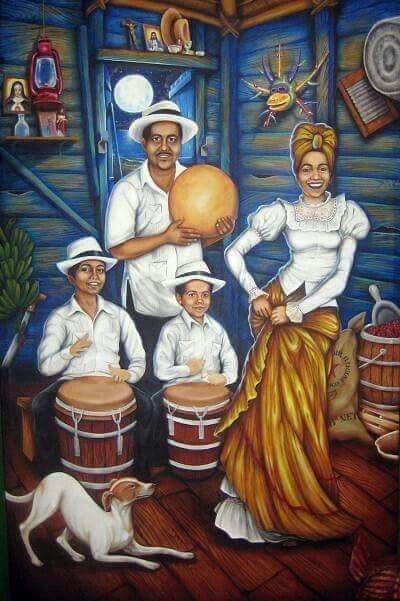
fiestas de la cultura de Puerto Rico
La plena
La plena es un ritmo y baile que pertenece a la cultura de Puerto Rico. Los locales de la zona costeña de la isla se identifican con este tipo de música. Así como sucede con el origen de la bomba, también ocurre con la plena. Según los especialistas en la cultura puertorriqueña, hay suposiciones que dicen que la plena es nata del pueblo de Ponce, específicamente de la zona costera del sur.
No obstante hay otros bailes que son parte de la tradición de Puerto Rico, ya que han encontrado entre los locales aficionados a estos estilos musicales como la salsa, el merengue y el jazz. En la actualidad es común hallar grandes representantes de estos ritmos, pues en la isla son muy populares, no hay lugar en el que no se celebre a son de un merengue o una buen salsa.
La diversidad en tanto a manifestaciones artísticas demuestra que la cultura popular de Puerto Rico es alimentada por diferentes cuentes culturales, lo cual ha sido provechosa, ya que con ellas se ha creado toda una forma de vida y expresiones que le han dado identidad a un pueblo.
Para tener una demostración de cómo los boricuas bailan la plena hemos anexado un video. La plena es una tradición boricua nata. ¿Sabes de qué se trata el baile?. Entonces, haz clic en la siguiente representación realizada por un grupo de baile. Una de las maneras que se frecuentan las personas para hacer honor a sus costumbres y tradiciones son los concursos, las festividades. He aquí una representación de la plena.
Festivales de Puerto Rico
festivales de la cultura de Puerto Rico
En Puerto Rico se reservan días para celebrar un sin fin de festivales que hacen honor a las tradiciones populares. Muchas de ellas han sido heredadas por los indígenas y culturas extrajeras. Los eventos culturales le han dado vida a las costumbres y han permitido mantener los símbolos y valores que hacen del puertorriqueño un puertorriqueño.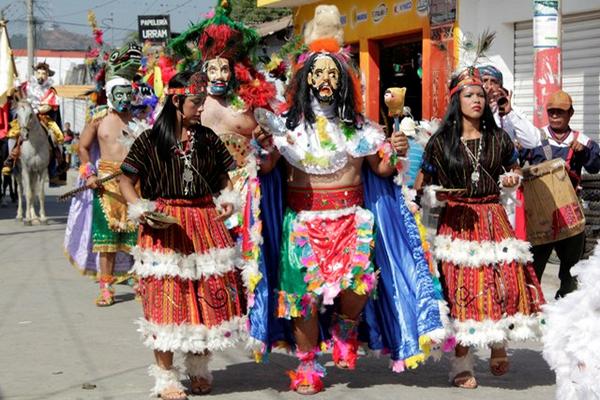
Los distintos agasajos se encuentran los festivales culturales de Puerto Rico, en ellos se les brinda la oportunidad a la comunidad de artistas de evidenciar sus trabajos y talentos. Algunos de los eventos que resaltan en el calendario de festivales en Puerto Rico:
- Fiesta de la Calle de San Sebastián es un evento realizado el 17 de enero de cada año.
- También se destacan fiestas tradicionales de Puerto Rico como
- Puerto Rico Heineken Jazz fest
- Festival de la novilla
- Festival del pescador
- Festival del mango
- Festival de las flores
Cada una de las fiestas conmemoran las actividades y tradiciones de Puerto Rico. Algunas de ellas se encuentran relacionadas con la gastronomía de Puerto Rico, sus alimentos típicos y más representativos. Otros tienen que ver con la principal actividad comercial realizada desde tiempo antiguos: la pesca. De esta forma la cultura de Puerto Rico, en sus fiestas, demuestra el folclore de la región caribeña.
Para culminar te invitamos ver una demostración de unos de los festivales de Puerto Rico más sonado en todos los tiempos. La cultura boricua es rica de fusiones tanto taina como de otras regiones del mundo tal como se ha hecho referencia a lo largo del artículo. En esta interpretación conocerás sobre cómo los borriqueños disfrutan y celebran sus tradiciones.
Tradiciones de Puerto Rico: juegos, costumbres y más
Todos los países tienen sus tradiciones, eso está demás decirlo, pero a muchas personas les causa un poco de intriga las tradiciones de Puerto Rico, ya que es un país muy alegre, y les hace saber que su cultura es interactiva, aquí sabrás si es verdad.
Indice De Contenido
- 1 Fiestas y tradiciones de Puerto Rico
- 2 Costumbres y tradiciones de Puerto Rico en navidad
- 3 Tradiciones religiosas de Puerto Rico
- 4 Tradiciones de Bodas en Puerto Rico
- 5 Juegos tradicionales de Puerto Rico
- 5.
 1 Carrerilla:
1 Carrerilla: - 5.2 Gallito
- 5.
Fiestas y tradiciones de Puerto Rico
Entre las fiestas que más celebran los puertorriqueños se pueden mencionar las siguientes:
- Año Nuevo.
- Día de Reyes.
- Fiesta de San Sebastían.
- Nacimiento de Luis Muñoz y el día de los presidentes.
- Carnavales.
- Fiesta casals.
- Domingo de Ramos.
- Viernes santo.
- Día de la madre y del padre.
- Entre muchos otros más.
Costumbres y tradiciones de Puerto Rico en navidad
En realidad, como se pudo mencionar anteriormente en Puerto Rico se sienten en todo el año, por sus fiestas, pero en la que más se destacan son en las navideñas, si tienes la oportunidad de visitar ese hermoso país por esa fechas, podrás sentir las parrandas que hacen desde las madrugadas, escucharás los villancicos desde la tarde hasta la madrugada, para despertar a todos los familiares y desearles feliz navidad o en su efecto feliz año nuevo.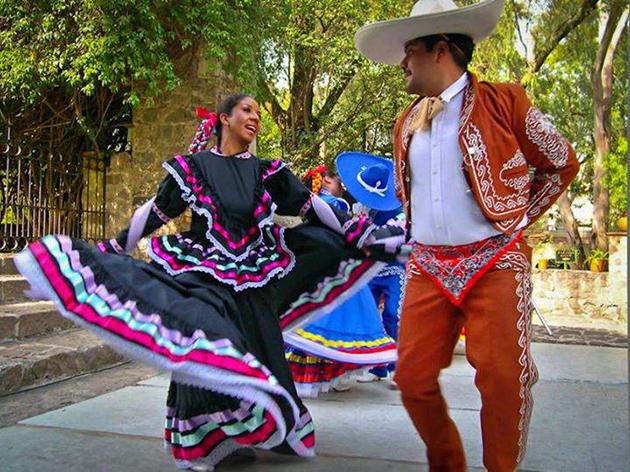
Además es importante recalcar, que en Puerto Rico se hacen una de las navidades más largas del mundo, comenzando desde el 23 de noviembre, que para ellos es el día de gracias hasta finales del año nuevo, es decir, enero que vendrían siendo la octavita de San Sebastían. (ver: tradiciones españolas).
Otra gran festividad que se celebra en las tradiciones de Puerto Rico es el día de San Sebastían, ya que todos los puertorriqueños se reúnen en la playa y se lanzan de espalda una o más veces, eso simboliza para ellos que dejan las malas energías en el mar, pero no solamente eso, además se celebra con música, bailes y no se puede dejar a un lado su comida que realmente es una delicia que no puedes dejar de probar y hacerla desde tu hogar.
Tradiciones religiosas de Puerto Rico
Las tradiciones religiosas que más se suelen destacar en la isla del sabor, es decir, en Puerto Rico, son las que se suelen hacer en Semana santa, ya que los mismos recorren las iglesias que se encuentran en el viejo San Juan, lo hacen entre el jueves y viernes santo y visitan los 7 monumentos, cabe destacar que eso depende de la religión de la persona, muchos otros puertorriqueños no hacen estos recorridos mencionados anteriormente, sino que prefieren ir un domingo a la iglesia o cualquier otro día que tenga pautado.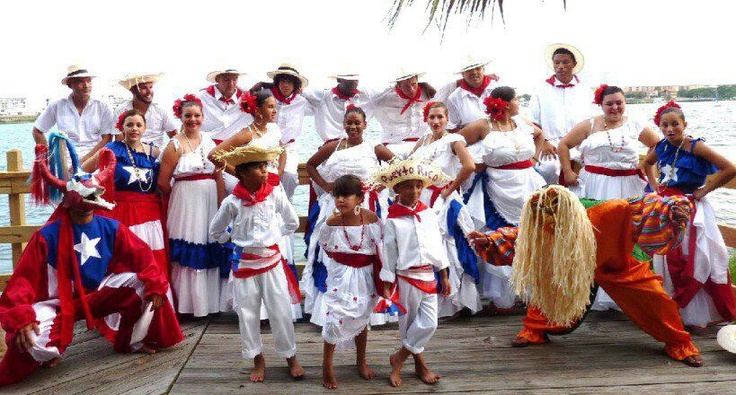 (ver: cultura inglesa).
(ver: cultura inglesa).
Tradiciones de Bodas en Puerto Rico
Lo más tradicional que puedes observar en una boda de Puerto Rico, es ver que los novios presentan ante el padre un plato lleno de monedas de doradas, momento después de bendecirlas, le son entregadas las monedas al novio y seguidamente el mismo se las entrega a la novia, se realiza está bonita tradición para tener una prosperidad en la vida de casados.
Otra bonita tradición para las mujeres es llevar un abanico a su boda junto con el ramo, lo hacen para honrar sus antepasados ya que el abanico es conocido como el ajuar de las mujeres puertorriqueñas. (ver: cultura Italiana)
Juegos tradicionales de Puerto Rico
Carrerilla:
Es un juego que se conoce porque la mayoría de los niños lo han jugado, hasta los adultos lo pueden reconocer.
Se basa en colocar un punto de salida, preferiblemente en una recta, y luego colocarse unos cuantos pasos después del punto de salida, consiste en dos personas, uno se encuentra parado, y el otro en el piso apoyando sus brazos en el mismo, mientras el otro le sostiene las piernas, tal y como fuera una carrerilla. Tienen que ser varias parejas, para que pueda ser una competencia, luego se hace la señal para que arranquen, y el que llegue primero a la meta gana.
Tienen que ser varias parejas, para que pueda ser una competencia, luego se hace la señal para que arranquen, y el que llegue primero a la meta gana.
Gallito
No hay nada mejor que observar un video para saber exactamente cuales son los pasos, y por supuesto no se puede dejar a un lado el juego de gallitos, que es muy tradicional en los juegos de todos los puertorriqueños, desde los más pequeños hasta los mayores, puesto que todos disfrutan de este ingenioso juego, solo tienes que seguir todos los pasos que puedes apreciar en el video, y por supuesto tener varios compañeros para que sean los contrincantes. Hazlo no te arrepentirás si eres un adultos regresarás a tu niñez, y si tienes pequeños en casa, le estarás inculcando juegos tradicionales de otros países, o si eres puertorriqueño, de su país natal.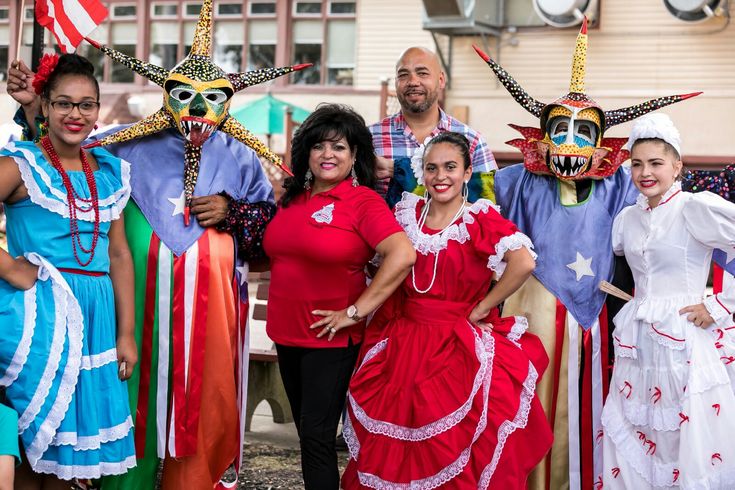 (ver: tradiciones de México)
(ver: tradiciones de México)
Puerto Rico
A salty wind of adventure humming through the rocky cliffs of the island’s coast. Warm Caribbean sun. An incredible combination of medieval antiquity and cutting-edge service. Birthplace of Bacardi and Pina Colada. This is Puerto Rico – an island that embodies the dream of a good rest. Here, in Puerto Rico, everything is permeated with the spirit of antiquity, the times of the Spanish conquests, corsairs and slave traders. Here everyone can touch this atmosphere, feel it and plunge headlong into an intoxicating fairy tale of sails filled with wind, fascinating discoveries, a mixture of cultures – and all this to the sound of melodic Caribbean tunes. Here, in Puerto Rico, people come for impressions, vivid and exciting.
geographic location
Puerto Rico is located in the northern part of the Caribbean Sea, at the junction of the Lesser and Greater Antilles chains, being the smallest and easternmost island in the Greater Antilles group. It is washed by the Atlantic Ocean in the north and the Caribbean Sea in the south (the total length of the coastline is 501 km). In the west it borders on the Dominican Republic (along the Mona Strait), in the northeast – on the British Virgin Islands, and in the southeast – on the Netherlands Antilles (along the throat of the Anegada Strait).
It is washed by the Atlantic Ocean in the north and the Caribbean Sea in the south (the total length of the coastline is 501 km). In the west it borders on the Dominican Republic (along the Mona Strait), in the northeast – on the British Virgin Islands, and in the southeast – on the Netherlands Antilles (along the throat of the Anegada Strait).
what is the climate like?
Tropical trade winds, warm and very even. The average monthly temperature fluctuates slightly throughout the year – from +22-24 C in winter to +28-29 C in summer. Hurricanes are such a common occurrence in Puerto Rico that powerful atmospheric eddies roll over the country from May to November. The weather during this period is quite hot, very humid and windy (wind speed on the periphery of the typhoon can reach 150 km134h). The most favorable time to visit the country is from December to April, when the weather is relatively cool and dry. However, this period also marks the peak of the tourist season, when the island is literally overflowing with tourists, prices are high, and accommodation in hotels without advance booking is quite problematic.
capital
San Juan.
population
The total population of the island is about 3.9 million people (one of the most densely populated islands in the world), but outside the country (mainly in the USA) there are about 2 million Puerto Ricans (it is believed that in New There are more of them in York than in San Juan).
religion
About 85% of the population are Catholics, about 10% are Protestants, but for the majority of believers, Christianity is combined with spiritualism, voodoo and Indian folklore and religious traditions.
political structure
The Commonwealth of Puerto Rico is a self-governing territory with the rights of an administrative-territorial unit of the United States. The Constitution was adopted on March 3, 1952, approved by the US Congress on July 3, 1952, and has been in effect since July 25, 1952. self-governing territory. The head of state is the President of the United States. The head of government is the governor, who is elected by secret general election for a four-year term.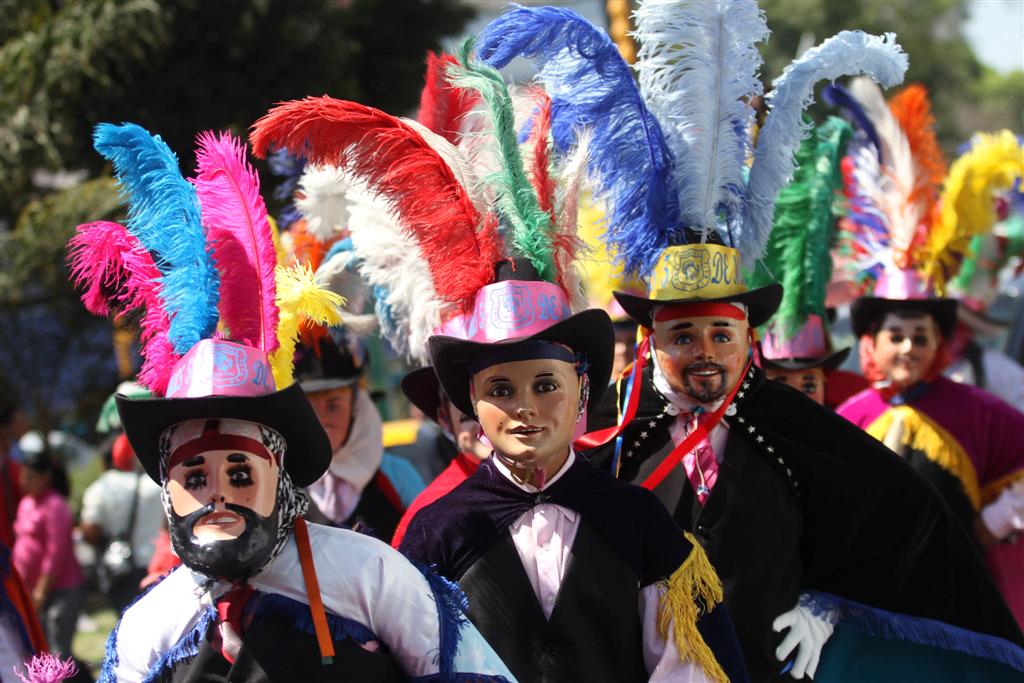 Administratively, the country is divided into 78 municipalities, which are an administrative unit formed around a city or other large settlement and its surrounding territories. A municipality is the country’s primary legal unit and is governed by an elected mayor, however the US Census Bureau considers a municipality to be the equivalent of a county.
Administratively, the country is divided into 78 municipalities, which are an administrative unit formed around a city or other large settlement and its surrounding territories. A municipality is the country’s primary legal unit and is governed by an elected mayor, however the US Census Bureau considers a municipality to be the equivalent of a county.
time difference
8 hours behind Moscow.
language
The official languages are Spanish and English. The most common is Spanish, or rather, its local variety, which combines the canonical Castilian dialect and many English, African and Indian language borrowings. English is widely accepted in business and tourism, although it also differs markedly from the London dialect and is literally saturated with Americanisms and borrowings from Spanish.
currency
US dollar (USD, US$), equal to 100 cents. The US dollar is often referred to as the “peso” on Puerto Rican price tags.
flight
The most convenient flight is offered by Delta via Atlanta. It is slightly cheaper to fly with two transfers: for example, a Finnair flight to Helsinki, and from there American Airlines via New York to San Juan.
It is slightly cheaper to fly with two transfers: for example, a Finnair flight to Helsinki, and from there American Airlines via New York to San Juan.
medical care and insurance
The level of medical services and the quality of services on the island is quite high and is based on US standards. About 14 modern clinics provide almost all possible types of healthcare. Many hotels have English-speaking doctors. However, the cost of services is quite high. International health insurance is highly recommended.
resort areas
The picturesque shores of Playas Liguillo, east of the capital, are the best places for relaxing by the sea on the northern coast, which are a popular place for seaside picnics. The water here is very clear and the relatively shallow coastline makes it ideal for children. The shores on the south coast of the island are more protected from waves and usually have more “calm” water than on the northern, Atlantic coast. Beautiful beaches are located at Punta Guillarte, near Arroyo, near Boguerina – these are Hobo, Maria Beach, Doms Beach and Sandy Beach. There are many beautiful beach spots on the numerous small islands of the country – Flamenco Beach on Culebra regularly tops the top ten in the region, La Parguera off the southwest coast is no less good, Humacao Beach (east coast), the long coasts of the Vieques Islands, Mona or a deserted island Palomenitos off the coast of Fajardo.
There are many beautiful beach spots on the numerous small islands of the country – Flamenco Beach on Culebra regularly tops the top ten in the region, La Parguera off the southwest coast is no less good, Humacao Beach (east coast), the long coasts of the Vieques Islands, Mona or a deserted island Palomenitos off the coast of Fajardo.
entertainment
Puerto Rico has many excellent dive sites. The best dive sites off the northern coast of the country are some distance from the coast, as the rivers carry a lot of suspended particles into the sea, making it difficult to navigate underwater. But the western, southern and eastern shores have always been famous for their exceptionally clear water and beautiful reefs. The legendary Deseceo Island, to the west of Rincon, is famous for its 9 km underwater canyon and is considered the best diving spot in the Caribbean. Also good sites near Humacao, south of Fajardo and around the desert island of Palomenitos, near Isabel, around La Parguera and along the entire coast of Phosphorescent Bay, north of Esperanza (Vieques Island) and along the entire eastern coast of Culebra. The best surfing conditions can be found on the northwest coast between Rincona and Isabel, at Aviones Beach, and near Isla Verde (October to April), although beginners generally prefer the sheltered waters of the San Juan and Condado lagoons.
The best surfing conditions can be found on the northwest coast between Rincona and Isabel, at Aviones Beach, and near Isla Verde (October to April), although beginners generally prefer the sheltered waters of the San Juan and Condado lagoons.
shopping
Shops are usually open from Monday to Wednesday from 09.00 to 19.00, from Thursday to Friday – from 09.00 to 21.00. On Saturdays, most shops are open from 11.00 to 17.00-18.00. Some shops in the port area also open on Sundays, but their work schedule is strictly tied to the period of stay in the port of a particular cruise liner. Many cities in the country have a good selection of shops, private shops and markets selling everything you need at very reasonable prices. You can bargain in the markets and in private shops, it is completely useless in large stores – the prices here are usually fixed, and discounts are provided by a very limited number of outlets.
cuisine
The locals call their cuisine “kosina criolla” and trace its ancestry to the traditions of the Arawak and Taino Indian peoples. However, even with the naked eye, you can find many differences between local cuisine and the original Indian cuisine, which was based on cereals, various root crops, fruits and seafood. Numerous local dishes of beef, pork, legumes, rice and wheat have clear Spanish roots, and they can also be clearly seen in the abundant use of vegetable oils, primarily olive. African slaves brought with them dishes of okra and taro, known in Puerto Rico as “yautia”, as well as various herbs now used in abundance as seasonings. As a result, the mixture of all these components led to the formation of an exotic modern Puerto Rican cuisine, widely known far beyond the borders of the country. Puerto Rico and especially San Juan abound with first-class restaurants specializing in both local cuisine and Spanish, Chinese, French, Greek or Italian cuisine. The visiting card of the local cuisine is soups. For a long time there have been disputes about the origin of the frijoles negros (black bean) soup, widely known throughout Latin America, but Puerto Ricans themselves consider it their “most popular” dish.
However, even with the naked eye, you can find many differences between local cuisine and the original Indian cuisine, which was based on cereals, various root crops, fruits and seafood. Numerous local dishes of beef, pork, legumes, rice and wheat have clear Spanish roots, and they can also be clearly seen in the abundant use of vegetable oils, primarily olive. African slaves brought with them dishes of okra and taro, known in Puerto Rico as “yautia”, as well as various herbs now used in abundance as seasonings. As a result, the mixture of all these components led to the formation of an exotic modern Puerto Rican cuisine, widely known far beyond the borders of the country. Puerto Rico and especially San Juan abound with first-class restaurants specializing in both local cuisine and Spanish, Chinese, French, Greek or Italian cuisine. The visiting card of the local cuisine is soups. For a long time there have been disputes about the origin of the frijoles negros (black bean) soup, widely known throughout Latin America, but Puerto Ricans themselves consider it their “most popular” dish.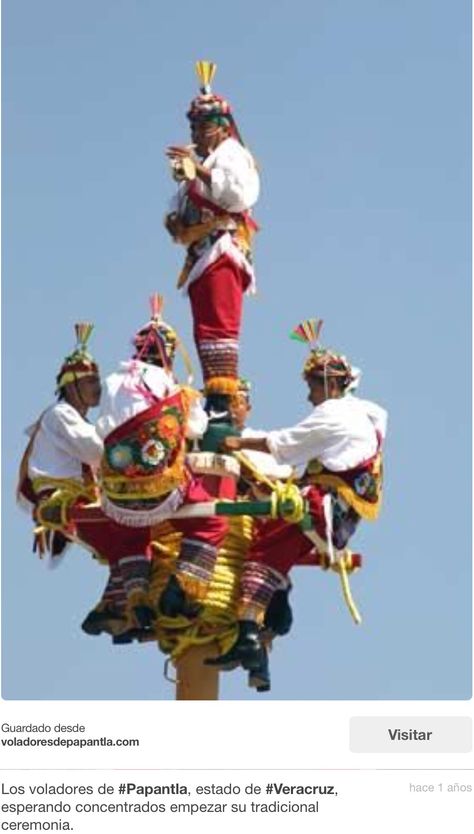 Much attention is paid to fish and seafood. Many Puerto Rican dishes are flavored and colored by “adobo” and “sofrito” blends of herbs and spices. The fertile land of Puerto Rico allows you to grow a wide variety of vegetables and fruits here. A local favorite is the chayote (a pear-shaped type of gourd commonly referred to as “christophon”), whose flesh is used in dozens of dishes. Another indispensable ingredient of the local cuisine is the breadfruit, which often accompanies the main dishes. Everywhere, in almost every dish, you can see the traditional for the countries of the region “tostones” – fried green bananas (although sometimes breadfruit slices are also called so here). In fact, “tostones” is the most popular side dish, an appetizer for many aperitifs and even a dessert, and its consumption is so high that the country has to import bananas from the Dominican Republic or Costa Rica. Desserts are usually pies with fruit jam or custard. Puerto Rican strong black coffee is considered the national drink.
Much attention is paid to fish and seafood. Many Puerto Rican dishes are flavored and colored by “adobo” and “sofrito” blends of herbs and spices. The fertile land of Puerto Rico allows you to grow a wide variety of vegetables and fruits here. A local favorite is the chayote (a pear-shaped type of gourd commonly referred to as “christophon”), whose flesh is used in dozens of dishes. Another indispensable ingredient of the local cuisine is the breadfruit, which often accompanies the main dishes. Everywhere, in almost every dish, you can see the traditional for the countries of the region “tostones” – fried green bananas (although sometimes breadfruit slices are also called so here). In fact, “tostones” is the most popular side dish, an appetizer for many aperitifs and even a dessert, and its consumption is so high that the country has to import bananas from the Dominican Republic or Costa Rica. Desserts are usually pies with fruit jam or custard. Puerto Rican strong black coffee is considered the national drink. The coffee tree has been grown in the mountainous regions of the island for more than 300 years, so the locals know how to cook it. Tea is popular only as an afternoon drink (for lunch or a business conversation), but all kinds of iced fruit juices can be found almost everywhere. Since the island does not produce wine, the most popular alcoholic beverages are beer (“chervesa”, the most popular brand is Medalla) and rum. Puerto Rico is one of the leading rum producers on the planet (80% of the rum consumed in the US is imported from here), so you can find about 200 varieties of first-class rum in any institution on the island. Imported drinks are also available in most restaurants and bars.
The coffee tree has been grown in the mountainous regions of the island for more than 300 years, so the locals know how to cook it. Tea is popular only as an afternoon drink (for lunch or a business conversation), but all kinds of iced fruit juices can be found almost everywhere. Since the island does not produce wine, the most popular alcoholic beverages are beer (“chervesa”, the most popular brand is Medalla) and rum. Puerto Rico is one of the leading rum producers on the planet (80% of the rum consumed in the US is imported from here), so you can find about 200 varieties of first-class rum in any institution on the island. Imported drinks are also available in most restaurants and bars.
Customs and Traditions
Puerto Rican culture is a mixture of Spanish, African and Native American traditions heavily influenced by US culture. Puerto Ricans consider themselves Americans, but they always specify that they are “Puertoquinos” or “Boricuas”, and their homeland is Puerto Rico, not the United States.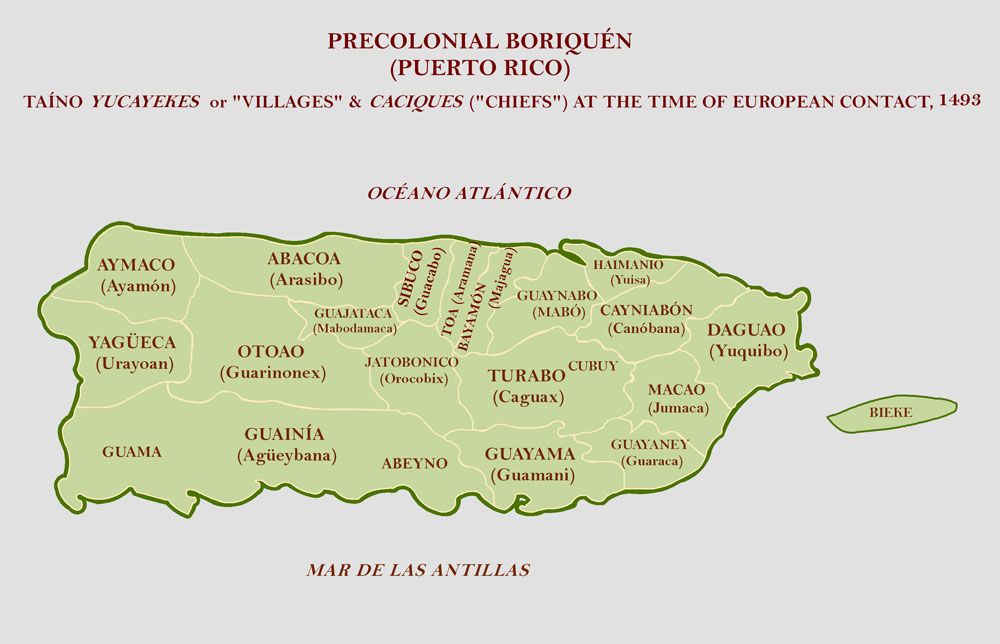 For most of them, “my country” does not mean the United States, but rather their small island, and the word “criollo” (Creole) usually means “all their own”: music, cuisine, language, art, people, religion and other aspects. The islanders are fiercely proud of their island and its culture, sometimes even opposing their traditions to the “poor”, as they consider, the inhabitants of the North American continent. Hence the numerous conflicts between ethnic Puerto Ricans and residents of the United States, manifested both in mutual claims to a way of life and in the expansion of cultures, as well as the constant desire of the inhabitants of the island for national independence, expressed in constant debate about the status of the island in the modern world. Almost all local settlements are difficult to distinguish from any provincial US city with a large Hispanic population. There is much in common both in the external style of cities and towns, and in the way of life, if you do not take into account the significantly lower standard of living of Puerto Ricans.
For most of them, “my country” does not mean the United States, but rather their small island, and the word “criollo” (Creole) usually means “all their own”: music, cuisine, language, art, people, religion and other aspects. The islanders are fiercely proud of their island and its culture, sometimes even opposing their traditions to the “poor”, as they consider, the inhabitants of the North American continent. Hence the numerous conflicts between ethnic Puerto Ricans and residents of the United States, manifested both in mutual claims to a way of life and in the expansion of cultures, as well as the constant desire of the inhabitants of the island for national independence, expressed in constant debate about the status of the island in the modern world. Almost all local settlements are difficult to distinguish from any provincial US city with a large Hispanic population. There is much in common both in the external style of cities and towns, and in the way of life, if you do not take into account the significantly lower standard of living of Puerto Ricans. But if you explore the provincial areas and the countryside, you can get acquainted with the complex Creole culture, which is much wider than the worship of mass culture. Puerto Ricans are known for their hospitality and are often very friendly to strangers with a genuine interest in their island. Greetings are usually cordial and sincere, and a properly arranged conversation often “weighs” in the eyes of the locals even more than a commercial benefit.
But if you explore the provincial areas and the countryside, you can get acquainted with the complex Creole culture, which is much wider than the worship of mass culture. Puerto Ricans are known for their hospitality and are often very friendly to strangers with a genuine interest in their island. Greetings are usually cordial and sincere, and a properly arranged conversation often “weighs” in the eyes of the locals even more than a commercial benefit.
information
Emergency services:
- Unified rescue service – 911.
- Police – 787/343-2020
- Ambulance – 787/343-2222.
- Fire Department – 787/343-2330
- Coast Guard – 787/729-6770.
tips
Security: The security situation here is rather ambiguous. On the one hand, the overall level of violent crime here is quite low, and the areas frequented by tourists are quite safe and are under the protection of special police units. However, the poor areas of most large cities are noticeably criminalized and pose a certain danger to foreign tourists.:quality(75)/arc-anglerfish-arc2-prod-elcomercio.s3.amazonaws.com/public/CG3AVYP76ZDXRHF6WKXLBMYLQU.jpg) If you ask a Puerto Rican how to get to a particular place, you will most often hear “follow me.” In most cases, such an escort has sincere intentions to take the tourist to the place he needs, but it should be borne in mind that in some cases this way you can get to the wrong place at all, or even be robbed. You should be especially careful with such guides at night and it is highly undesirable for women and individual travelers.
If you ask a Puerto Rican how to get to a particular place, you will most often hear “follow me.” In most cases, such an escort has sincere intentions to take the tourist to the place he needs, but it should be borne in mind that in some cases this way you can get to the wrong place at all, or even be robbed. You should be especially careful with such guides at night and it is highly undesirable for women and individual travelers.
Nudism: Prohibited in public places in Puerto Rico.
Electricity: Mains voltage is 110V, 60Hz (some hotels provide 220V). Plugs are usually American style with two flat pins.
Croatian culture and traditions | Croatian coast
The beauty of this country lies not only in the splendor that we see, feel and feel, but also in the attractiveness of the people born here, the beauty of their soul and body. This beauty remains in the memories with which we return, which we share with close friends.
- Culture
- People and cities
- Food & Drink
Culture
At the beginning of the 7th century, Croats settled in what is now the Republic of Croatia. At the beginning of the Middle Ages, Croatia waged numerous defensive wars, as it was on the border of the civilized world. In the 9th century, the border between the state of the Franks and the Byzantine Empire passed through the territory of Croatia, in the 11th century – the border between the Catholic and Orthodox churches, and from the 15th to the 19thcentury – the border between Ottoman Islam and Christianity. From the 9th to the 12th centuries, Croatia was an independent and self-sufficient principality and, later, a kingdom, which is confirmed by numerous written testimonies. Endless armed conflicts with the Venetians, Byzantines and Turks forced Croatia to move closer to the Austrian and Hungarian dynasties, which led to new, small and large wars for territorial independence and the restoration of independence. Croatia gained full national independence in 1990 year.
At the beginning of the Middle Ages, Croatia waged numerous defensive wars, as it was on the border of the civilized world. In the 9th century, the border between the state of the Franks and the Byzantine Empire passed through the territory of Croatia, in the 11th century – the border between the Catholic and Orthodox churches, and from the 15th to the 19thcentury – the border between Ottoman Islam and Christianity. From the 9th to the 12th centuries, Croatia was an independent and self-sufficient principality and, later, a kingdom, which is confirmed by numerous written testimonies. Endless armed conflicts with the Venetians, Byzantines and Turks forced Croatia to move closer to the Austrian and Hungarian dynasties, which led to new, small and large wars for territorial independence and the restoration of independence. Croatia gained full national independence in 1990 year.
Numerous powerful empires and countries that dominated these places left visible traces of presence in the form of outstanding cultural monuments.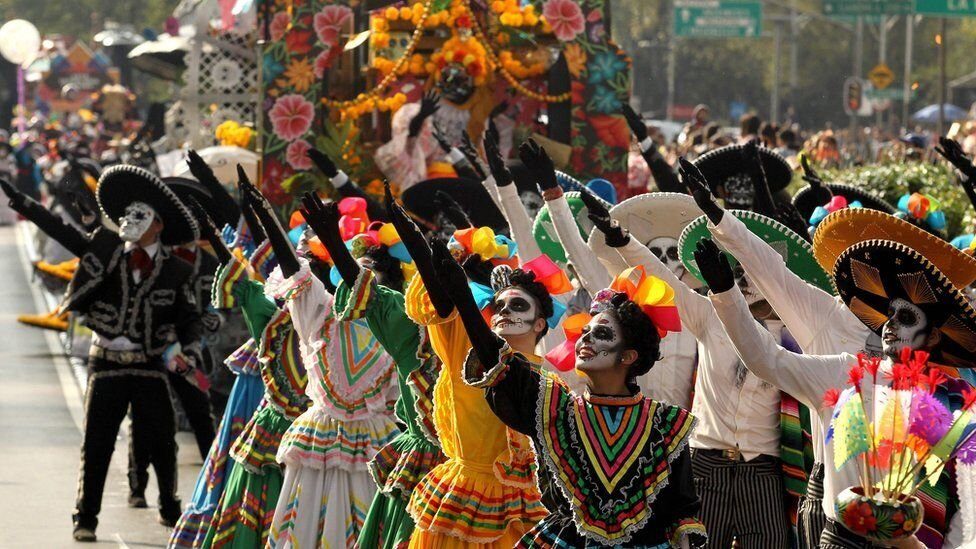 The cities on the coast were built mainly in the ancient and Middle Ages. The city Pula with the well-preserved Roman amphitheater Arena, the Arch of the Sergians and the temple of Augustus, as well as the palace of the Roman emperor Diocletian of the 4th century AD in the city Split (later recognized as a medieval city, and today under the protection of UNESCO) are the largest monuments ancient culture on the Croatian coast.
The cities on the coast were built mainly in the ancient and Middle Ages. The city Pula with the well-preserved Roman amphitheater Arena, the Arch of the Sergians and the temple of Augustus, as well as the palace of the Roman emperor Diocletian of the 4th century AD in the city Split (later recognized as a medieval city, and today under the protection of UNESCO) are the largest monuments ancient culture on the Croatian coast.
The Basilica of St. Euphrasius in Poreč, built in the 6th century, is the most beautiful surviving monument of early Byzantine mosaics in the Mediterranean. The mosaic of the Basilica of Saint Euphrasius is comparable to that of the church of San Vitale in Ravenna; These monuments are the most significant examples of mosaic art in Europe.
The complex of this three-nave basilica is considered a significant historical monument throughout the world, which was declared by UNESCO in 1997 as a cultural monument of world importance.
Romanesque monuments characterize the towns of Krk, Rab and Trogir. Trogir is one of the best preserved Romanesque-Gothic towns in Central Europe. The medieval walled city center includes well-preserved castles and towers, as well as numerous buildings and palaces from the Romanesque, Gothic, Renaissance and Baroque periods.
The most important building is the Cathedral in Trogir with a portal carved in 1240, which is a masterpiece of Dalmatian stone carving by master Radovan. The cathedral is the most significant example of Romanesque-Gothic art in Croatia.
Renaissance monuments distinguish the cities of Osor, Pag, Šibenik, Fr. Hvar, Korcula and Dubrovnik. The city of Dubrovnik, built in the 13th century, can be recognized by its well-preserved Renaissance walls and towers, famous public buildings, churches, palaces and Renaissance summer houses.
All these buildings were built during the period of the independent Republic of Dubrovnik, which paid heavy taxes to the Ottoman Empire in order to preserve its independence and, thanks to trade, fishing and the accumulation of wealth, embellished the city.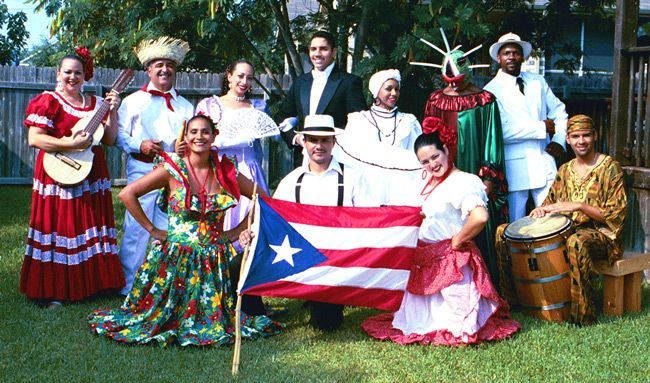 Today the whole city is under the protection of UNESCO.
Today the whole city is under the protection of UNESCO.
It is important to note among the remaining cultural monuments, a large number of ancient Croatian churches built during the reign of monarchs. Of particular interest is stone carving, which is characterized by a wicker ornament. The wooden doors of the Cathedral in Split with scenes from the life of Jesus Christ, made by master Buvin in the early 13th century, have been preserved in exceptionally good condition.
Today contemporary art is intertwined with historical, cultural and architectural heritage. Palaces, atriums and squares become the scenes of traditional festivals and international games: the Dubrovnik Games summer festival, the Pula Film Festival, the body in Split and musical evenings in Zadar and Osor, the Croatian Theater Days …. In every, even the smallest town on the coast, next to live classical and urban techno music you can hear folk music, and next to world famous singers and young people from “Klapa” (Dalmatian vocal tradition).
People and cities
The population of the coastal regions of Croatia and the islands has been engaged in navigation, shipbuilding, fishing, winemaking and olive oil production since time immemorial . Salt is still obtained here by evaporation from sea water. In ancient times, salt was highly valued and exchanged for other products. The oldest salt mines are located in the town of Ston (XIII century), Croatian salt from the island of Pag is still sold today. For centuries, olives have been considered in Croatia not only as food, but also as a symbol of life and medicine. Beautiful and durable olive trees are carefully cultivated to this day so that our descendants can enjoy their fruits, fresh or salted or marinated in oil, as well as delicacies that would lose their uniqueness without olive oil.
Wild aromatic herbs such as rosemary, basil and fennel are an integral part of the unique taste of the local cuisine in Istria and Dalmatia, as well as the wines that are served with them. The color and taste of these wines speak of the hot sun, which, thanks to hard work and respect for tradition, plays in every drop. Numerous vineyards on the islands seem to descend into the sea.
The color and taste of these wines speak of the hot sun, which, thanks to hard work and respect for tradition, plays in every drop. Numerous vineyards on the islands seem to descend into the sea.
The Croatian tradition of winemaking spread all over the world as a result of the emigration of island winemakers to other countries. Today, the most famous winemaker in New Zealand is Grgič from the island of Brac, many Croatian winemakers are also well known in California.
The scents of the Mediterranean waft over the lavender fields on the island of Hvar. The flowers of this plant, as well as essential oils, scented creams and soaps, are sold all over the coast and you can buy them as gifts or for yourself. In the sea, in addition to fish, mussels, squid and sea urchins, you can find – thanks to the warm and clean Croatian waters – even sea sponge and corals. For many generations, the inhabitants of the island of Krapn have been growing sponge (although now much less than before) and the inhabitants of the island of Zlarin extract and process dark red Adriatic coral.
Navigation and shipbuilding are in the blood of the locals , not without reason the world-famous navigator Marco Polo, who hails from the island of Korcula. The city of Dubrovnik is the birthplace of famous shipbuilders, and today there are several small shipyards operating in the city, one of which is located on the island of Rab. Fishing is practiced in some places and, due to the rocky terrain and the lack of rain, this becomes the main source of subsistence for many families. Fishing is carried out in all weather conditions, and the nets are not always full. Descendants of ancient fishermen from the islands of Salia and Komiža now fish off the American and Chilean coasts, while the fishermen who remain in Croatia supply fish to the local fishing industry in Rovinj, as well as to restaurants…
Today, fishing is carried out with a net, but this is more of an entertainment for tourists than a necessity. However, fish caught on its own, as local experts say (and they can be trusted), fried or stewed, is always delicious.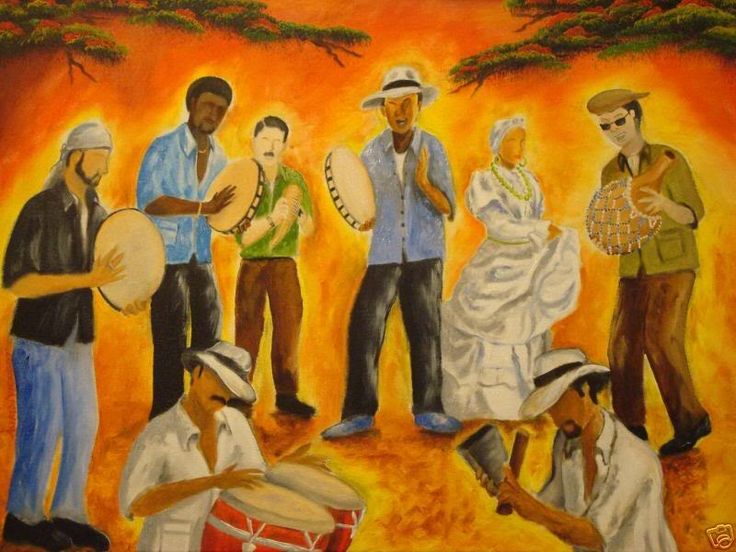 .. Life exists here and develops thanks to tourism The 130th anniversary of which was marked a long time ago. In addition to the hotel business, other innovations have appeared over time. If classical, medical and group tourism was popular in the 20th century, in this century sea, rural tourism and the so-called “robinsonade” are in demand.
.. Life exists here and develops thanks to tourism The 130th anniversary of which was marked a long time ago. In addition to the hotel business, other innovations have appeared over time. If classical, medical and group tourism was popular in the 20th century, in this century sea, rural tourism and the so-called “robinsonade” are in demand.
All this and much more you will find in Croatia. Nature is characterized by well-preserved and varied landscapes, which provide many opportunities for climbing, hiking, rafting, diving, sailing, paragliding and much more. If you are unfamiliar with these types of tourism and would like to learn, there are many schools for diving and sailing, for example. Antiques and art lovers, or enthusiastic archaeologists will have a great time in the ancient coastal cities, which have a history of millennia, for example, Split is 1700 years old
The inhabitants of the islands are distinguished by many virtues , and in addition to hard work, they know how to enjoy the joys of life. In seaside cities, as elsewhere in the Mediterranean, life takes place on the streets – in entertainment or controversy. On the streets people argue, chat and sing songs. In Croatia, folk songs are very fond of, they are heard all the time. People sing during work and at leisure, in joy and in sorrow, for themselves or for company. It is for this reason that it is not at all surprising that Croatian singers are mainly natives of the coast or islands. In their free time, men, as before, play bowling. In bowling, as in other sports, Croatian men have achieved very good results. Coastal women also have their virtues. The fact that they are considered exceptionally beautiful is confirmed by the results of local and international beauty contests. You can also assume that they are just as wonderful mothers, because most of the local songs, in addition to songs about the sea and about love, are dedicated to them! Women here are still engaged in crafts that are almost universally forgotten: silk weaving and lace making.
In seaside cities, as elsewhere in the Mediterranean, life takes place on the streets – in entertainment or controversy. On the streets people argue, chat and sing songs. In Croatia, folk songs are very fond of, they are heard all the time. People sing during work and at leisure, in joy and in sorrow, for themselves or for company. It is for this reason that it is not at all surprising that Croatian singers are mainly natives of the coast or islands. In their free time, men, as before, play bowling. In bowling, as in other sports, Croatian men have achieved very good results. Coastal women also have their virtues. The fact that they are considered exceptionally beautiful is confirmed by the results of local and international beauty contests. You can also assume that they are just as wonderful mothers, because most of the local songs, in addition to songs about the sea and about love, are dedicated to them! Women here are still engaged in crafts that are almost universally forgotten: silk weaving and lace making.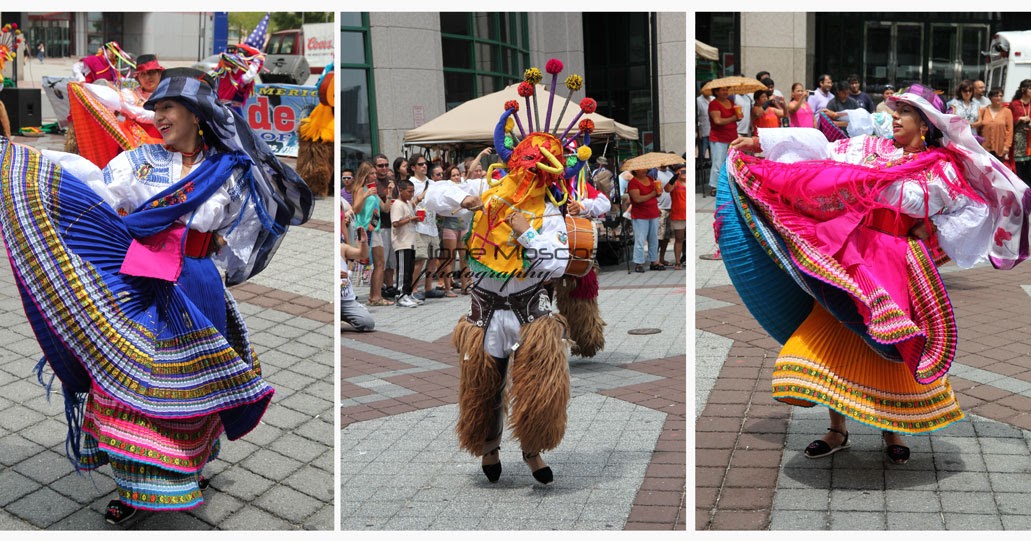 In the area of Dubrovnik, the city of Konavlė is known for its silk-working tradition, which is a source of pride for every family. The women of Konavle grow their own silkworms, feed them, take care of their cocoons, spin the silk threads and dye them yellow, red and black. Lacemaking is a specialty of the island of Pag, where women’s lacemaking is such an ancient tradition that it is already surrounded by a mythical halo. These laces are still highly valued today, although not as much as they used to be.
In the area of Dubrovnik, the city of Konavlė is known for its silk-working tradition, which is a source of pride for every family. The women of Konavle grow their own silkworms, feed them, take care of their cocoons, spin the silk threads and dye them yellow, red and black. Lacemaking is a specialty of the island of Pag, where women’s lacemaking is such an ancient tradition that it is already surrounded by a mythical halo. These laces are still highly valued today, although not as much as they used to be.
Coast
The coastline of Croatia is 5.835.5 kilometers or, sea-wise, 74% of the Adriatic (followed by: Italy 16%, Albania 5%, Montenegro 3.3%, Slovenia 0.5%, and Bosnia and Herzegovina 0.3% ). This sea coast is one of the longest in the world. The Istra peninsula covers an area of 3.476 square kilometers and borders three countries: Croatia, Slovenia and part of Italy.
The proximity of Croatia to Italy provides an opportunity to get acquainted with the Italian coast of the Adriatic.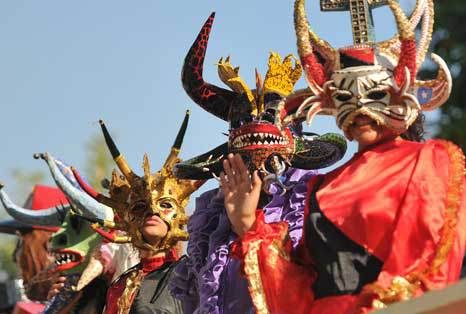 Venice , once the true mistress of the seas, now occupies four islands. Cars are prohibited throughout the city, as the city is a maze of canals, mostly traveled by gondolas and vaporettos. In Venice, you must: ride a gondola, feed the pigeons in St. Mark’s Square, stand on the Bridge of Sighs and visit at least some of the numerous churches that are very beautiful…
Venice , once the true mistress of the seas, now occupies four islands. Cars are prohibited throughout the city, as the city is a maze of canals, mostly traveled by gondolas and vaporettos. In Venice, you must: ride a gondola, feed the pigeons in St. Mark’s Square, stand on the Bridge of Sighs and visit at least some of the numerous churches that are very beautiful…
Venice has been awarded with many epithets. One of them La Serenissima – ‘the most cloudless Venice has been wearing for centuries. Venice is the city of lovers and artists, writers, musicians and artists, the magic glass from the island of Murano and the home of the famous film festival. During carnival days, you can experience – just like in Rio – the frenzy of fun that marks the start of Easter celebrations.
Croatia shares the Adriatic Sea with the Republic of Slovenia, whose coastline is also rich in beautiful nature and cities with a fascinating history. The sea coast of Slovenia, with the Gulf of Koper and part of the Gulf of Piran, extends from the mouth of the Dragonja River.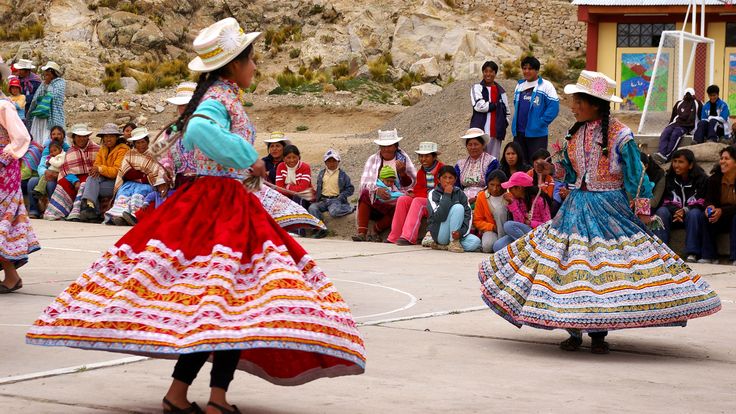 Piran a coastal town with well-preserved late medieval walls surrounding the town. The walls consist of two parallel walls built in the 15th century (circa 1475) and the 16th century. Some sights: Tartjev Square Cathedral of St. George, known as the ‘Venetian house’, built in the middle of the XV century. From the Baroque period there is a well on the square and a ‘Baroque House’ from the end of the 18th century.
Piran a coastal town with well-preserved late medieval walls surrounding the town. The walls consist of two parallel walls built in the 15th century (circa 1475) and the 16th century. Some sights: Tartjev Square Cathedral of St. George, known as the ‘Venetian house’, built in the middle of the XV century. From the Baroque period there is a well on the square and a ‘Baroque House’ from the end of the 18th century.
A trip to the Adriatic is incomplete without a trip to the south and acquaintance with the Montenegrin coast.
One of the most prominent bays on the Adriatic, Boka Kotorska (also known as the Gulf of Croatian Saints) is today a territory of Montenegro. Igalo and Herceg Novi are the most attractive tourist attractions on the Adriatic coast of Montenegro. You can get to Igalo from anywhere and by any transport. Due to the proximity of two international airports (Dubrovnik Cilipi airport is 26 km and Tivat 22 km), the Adriatic highway called ‘Highway’ (running along the entire coast, including Dubrovnik and Mostar, Trebinje and Sarajevo, as well as the capital of Montenegro, Podgorica) connects Igalo with Croatia, Bosnia and other European countries. Between Italy and the port of Dubrovnik and Bar (in Montenegro) there is a ferry that provides maritime communication. Ferry service also exists between the other islands of Croatia.
Between Italy and the port of Dubrovnik and Bar (in Montenegro) there is a ferry that provides maritime communication. Ferry service also exists between the other islands of Croatia.
Igalo and neighboring Herceg Novi are located in a picturesque sea bay on the southwestern coast of the Bay of Kotor at the foot of Mount Oren (1982 m). The ancient Greeks, Romans and Illyrians settled on the coast of the bay and on the neighboring hills. Since then, such large states as Byzantium, Venice, the Ottoman and Austro-Hungarian empires have conquered and ruled the region. A walk through the streets and squares of Herzng Novi will take you through the history of the Mediterranean. You will see Roman mosaics in Rizan, the Church of Our Lady, exhibitions of church museums and the beautiful Orovac Church, built on a rock overlooking the Bay of Kotor. After that, you can visit the town of Dobrota and the old town of Kotor, Buvda, which is full of life in summer, as well as in the cities of Becici, Milo, St.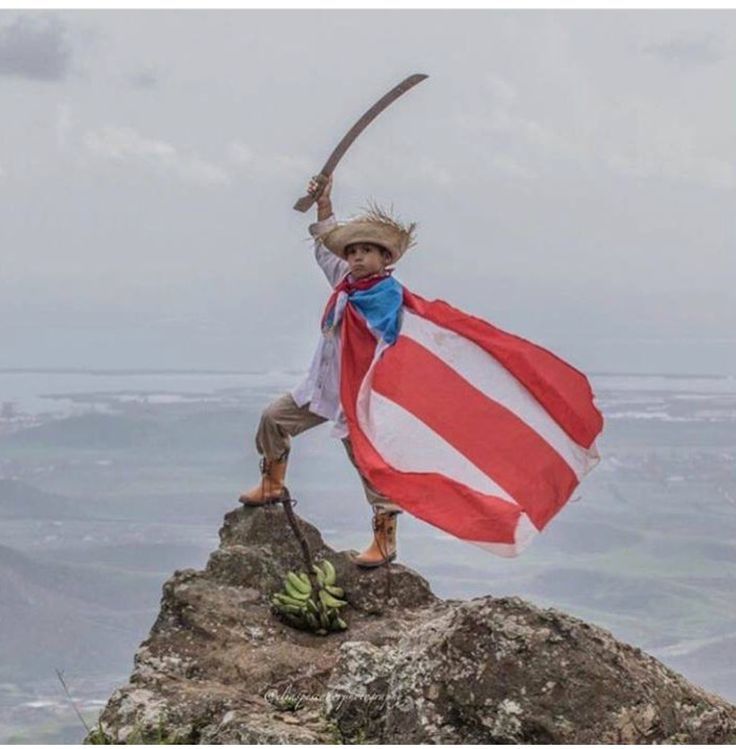 Stefan and Petrovac. When you visit the city of Bar, you will be proudly shown a 2000 year old olive tree with a trunk exceeding 10 meters in girth.
Stefan and Petrovac. When you visit the city of Bar, you will be proudly shown a 2000 year old olive tree with a trunk exceeding 10 meters in girth.
Depending on where you started from, your acquaintance with the Adriatic should end either in the north or in the south. And even when it seems to you that you have already seen everything, there will still be secluded corners, monuments and people who are worth visiting again … And although the Adriatic Sea and its coast are divided among many countries, it is here that people with different cultures , habits and historical traditions, created a mosaic of unique beauty.
Food & Drink
Croatian cuisine, especially in the coastal region, is distinguished by the traditional use of natural, wholesome foods, and the preparation of vegetable dishes in olive oil, seafood and fish, lamb and goat cheeses, and wines. A feature of the local cuisine is the actual preparation of dishes. Vegetables are cooked in a small amount of water and dressed with olive oil, aromatic herbs, fish is stewed, boiled or grilled. The meat, usually lamb meat, is roasted on a spit, which gives it a unique flavor.
Vegetables are cooked in a small amount of water and dressed with olive oil, aromatic herbs, fish is stewed, boiled or grilled. The meat, usually lamb meat, is roasted on a spit, which gives it a unique flavor.
The northern and southern regions of the Adriatic are characterized by different preferences in food and preparation, and there are differences between the culinary characteristics of Istria, Kvarner and Dalmatia.
A distinctive characteristic of Istrian cuisine is the abundant use of nature’s gifts from every season , so the gastronomic experience in Istria depends on the time of visit.
If you visit the northern Adriatic, you should definitely try the Istrian ‘ Prosciutto ‘, thinly sliced dried smoked meat and a traditional Croatian dish. Another local dish, pork sausages fried or boiled in wine, although the most famous Istrian dish is of course ‘Maneshtra’ , a thick soup of vegetables and dried meat.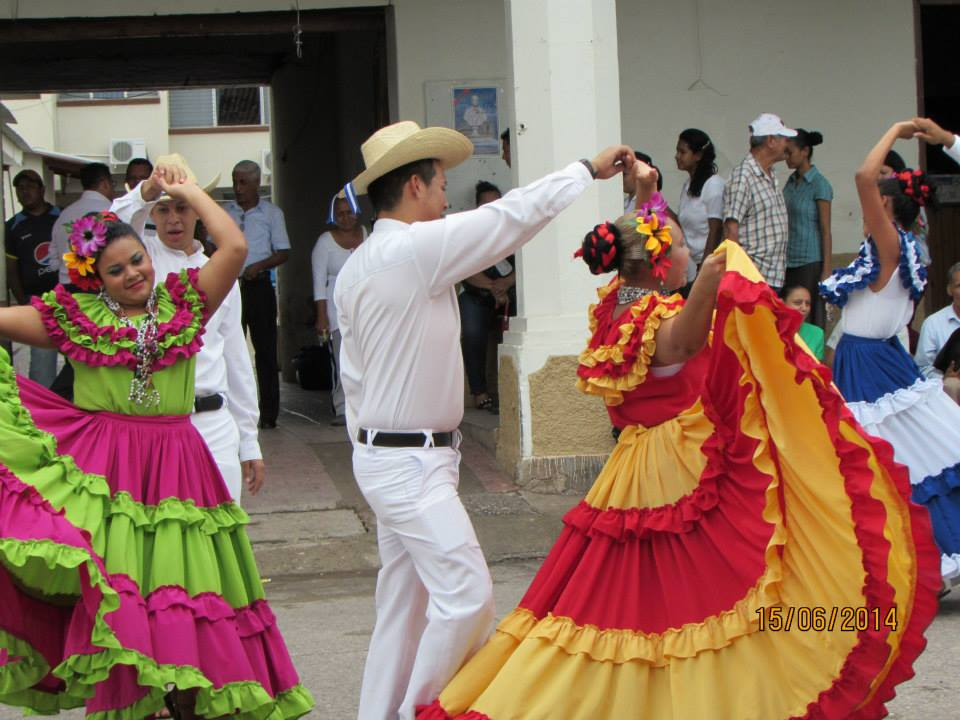 This region will also offer you a huge selection of fish and various seafood delicacies. Salted fry, clam salad, fresh fish – fried or boiled – and Kvarner skampi (shrimp) are just some of the dishes enjoyed by Italians who often come for the weekend. Various risottos (rice dishes) and pasta, served with olive oil and Istrian truffles – first-class mushrooms with a wonderful aroma – and extraordinarily tasty asparagus, represent only a part of the gastronomic diversity offered by this region.
This region will also offer you a huge selection of fish and various seafood delicacies. Salted fry, clam salad, fresh fish – fried or boiled – and Kvarner skampi (shrimp) are just some of the dishes enjoyed by Italians who often come for the weekend. Various risottos (rice dishes) and pasta, served with olive oil and Istrian truffles – first-class mushrooms with a wonderful aroma – and extraordinarily tasty asparagus, represent only a part of the gastronomic diversity offered by this region.
Traditional Istrian desserts are simple and uncomplicated, but are perfect as the finishing touch to outstanding Istrian cuisine.’ Fritul’ (fried donuts) are popular in winter and ‘pinca’ (sweet bread) is prepared for Easter celebrations, and consists of cakes and apples . Boiled or fried sweet ravioli are available at any time of the year.
Dalmatian cuisine is less fragrant and lighter than Istrian. Using plenty of fresh or lightly boiled vegetables as a side dish for the following different dishes: fried fish, fish soup, octopus, Ston oysters, skampi (shrimp) and mussels ‘na buzaru’ (fried), ‘pašticada’ with gnocchi (also known as Dalmatian goulash), grilled meat marinated with rosemary or the famous cheese from the island of Pag. There are delicacies that will please everyone. Olives are also inevitable – fresh or salted – and olive oil is the basis of Dalmatian cuisine.
Using plenty of fresh or lightly boiled vegetables as a side dish for the following different dishes: fried fish, fish soup, octopus, Ston oysters, skampi (shrimp) and mussels ‘na buzaru’ (fried), ‘pašticada’ with gnocchi (also known as Dalmatian goulash), grilled meat marinated with rosemary or the famous cheese from the island of Pag. There are delicacies that will please everyone. Olives are also inevitable – fresh or salted – and olive oil is the basis of Dalmatian cuisine.
Typical Dalmatian desserts win hearts with their simplicity. Common dessert ingredients include Mediterranean fruits, figs, raisins, almonds; honey and the famous Dubrovnik sweet ‘rožata’ (caramel egg pudding) or gingerbread from the island of Hvar.
With every good meal, before or after a meal, you can enjoy a glass of excellent wine. Wine produced in the coastal region of Croatia, as well as throughout the Mediterranean region, is the product of hard work that requires knowledge and respect. The first vineyards were planted in this region by the ancient Greeks. The wine from their colony at Issus (on the island of Vis) was considered the best wine of the ancient world. Winemaking spread thanks to the Roman army, whose soldiers carried vines and planted vineyards. The fertile land and the generous sun made it possible to obtain exceptional wines that were transported to all corners of the Roman Empire.
The first vineyards were planted in this region by the ancient Greeks. The wine from their colony at Issus (on the island of Vis) was considered the best wine of the ancient world. Winemaking spread thanks to the Roman army, whose soldiers carried vines and planted vineyards. The fertile land and the generous sun made it possible to obtain exceptional wines that were transported to all corners of the Roman Empire.
The great adventurer and seducer Giacomo Casanova wrote in his famous memoirs that he drank “fantastic refošk wine” in Istria. Neither the nobility nor the travelers and adventurers of the Austro-Hungarian monarchy could refuse the wines of Istria and Dalmatia, and tasted them with pleasure when they traveled in this region.
Grape and other wines are an integral part of the past and present of this rich wine region with diverse landscapes, climates and soils that give rise to today’s great variety of wines and offer a variety of tastes. The white Istrian wine Malmsey perfectly complements the wide range of seafood.
 1 Carrerilla:
1 Carrerilla: